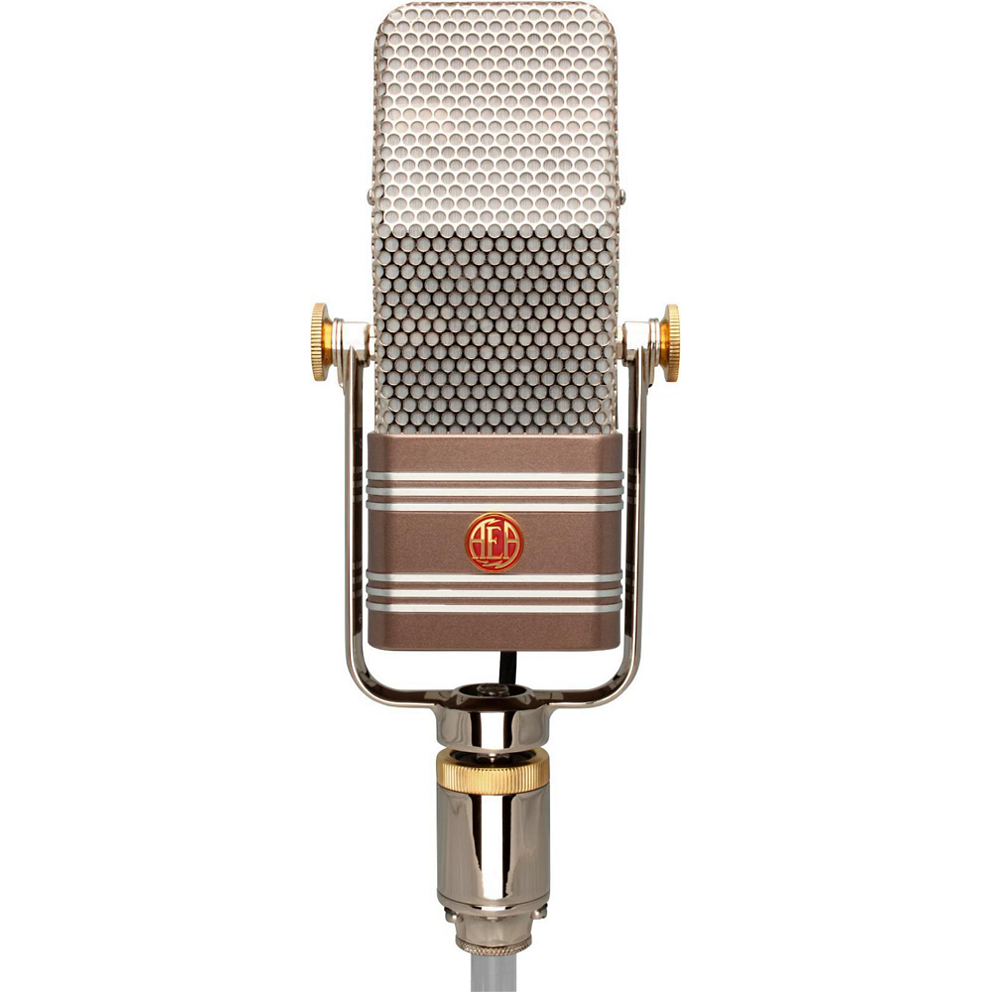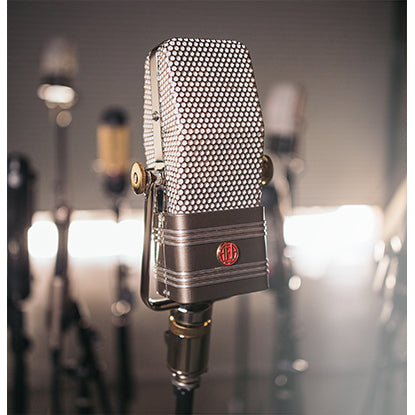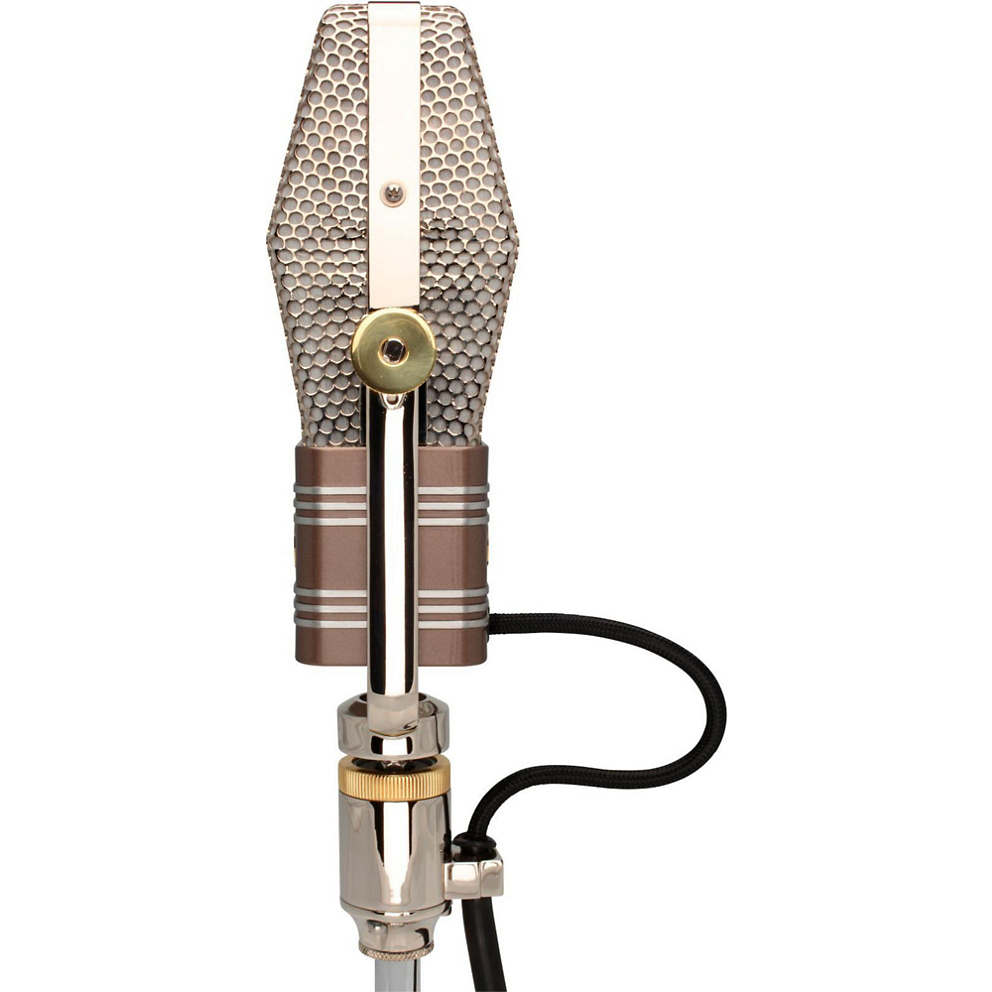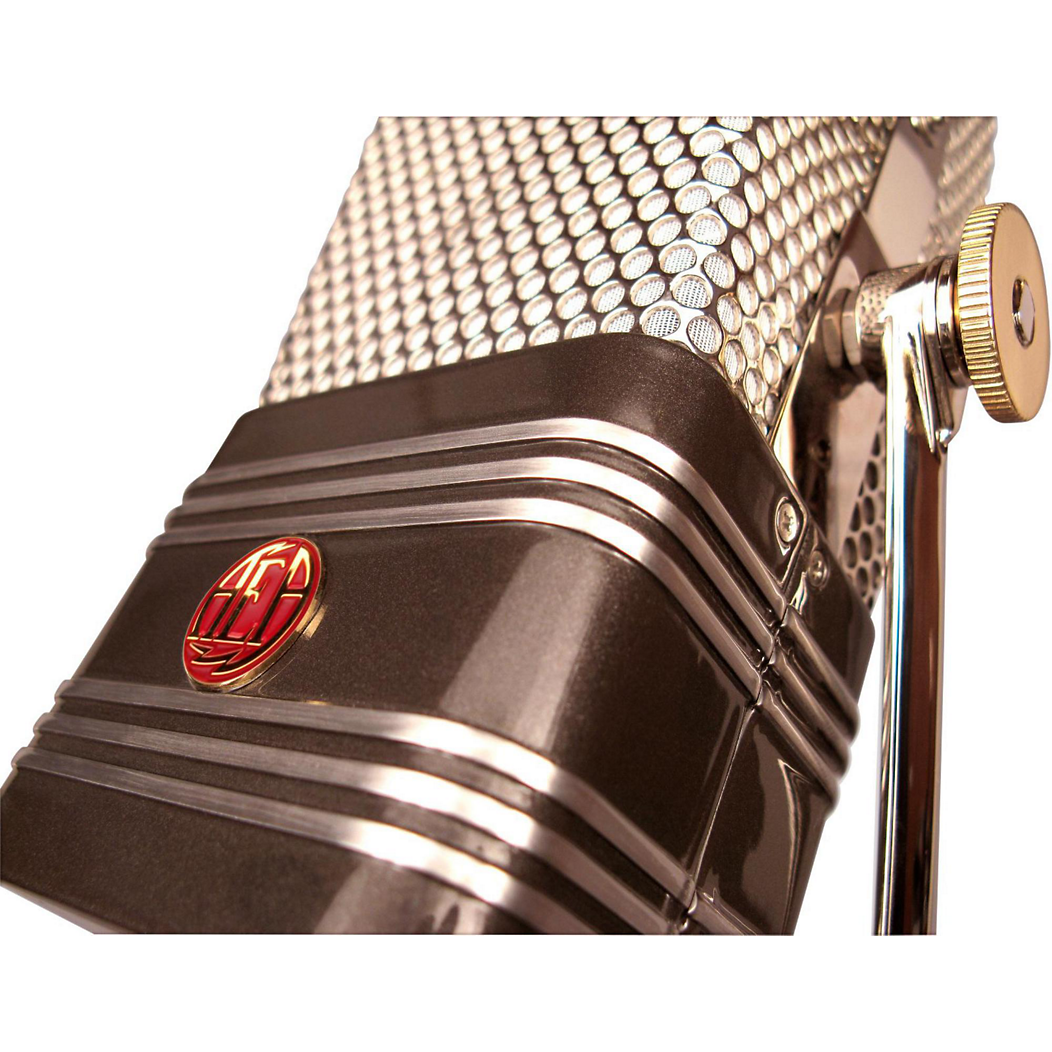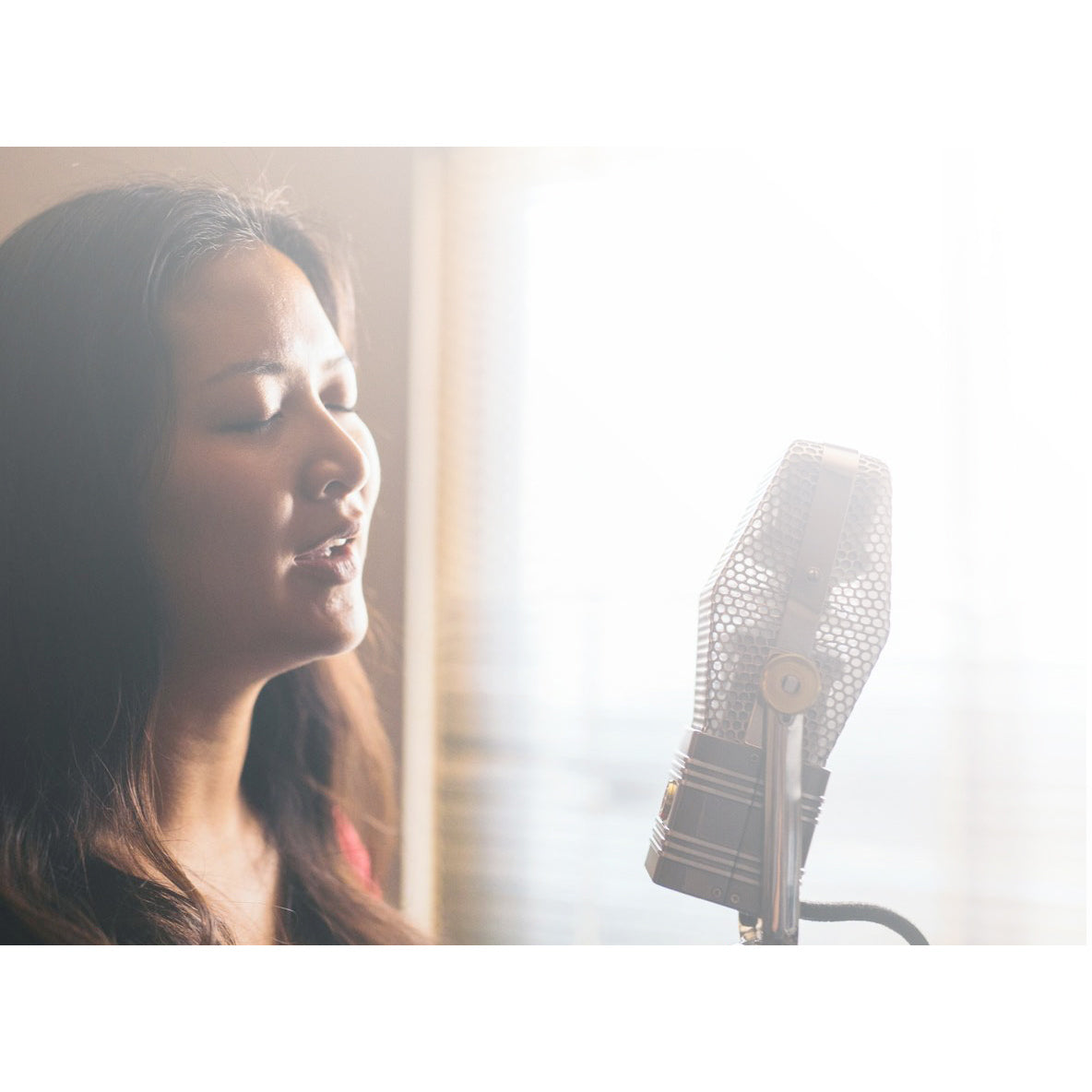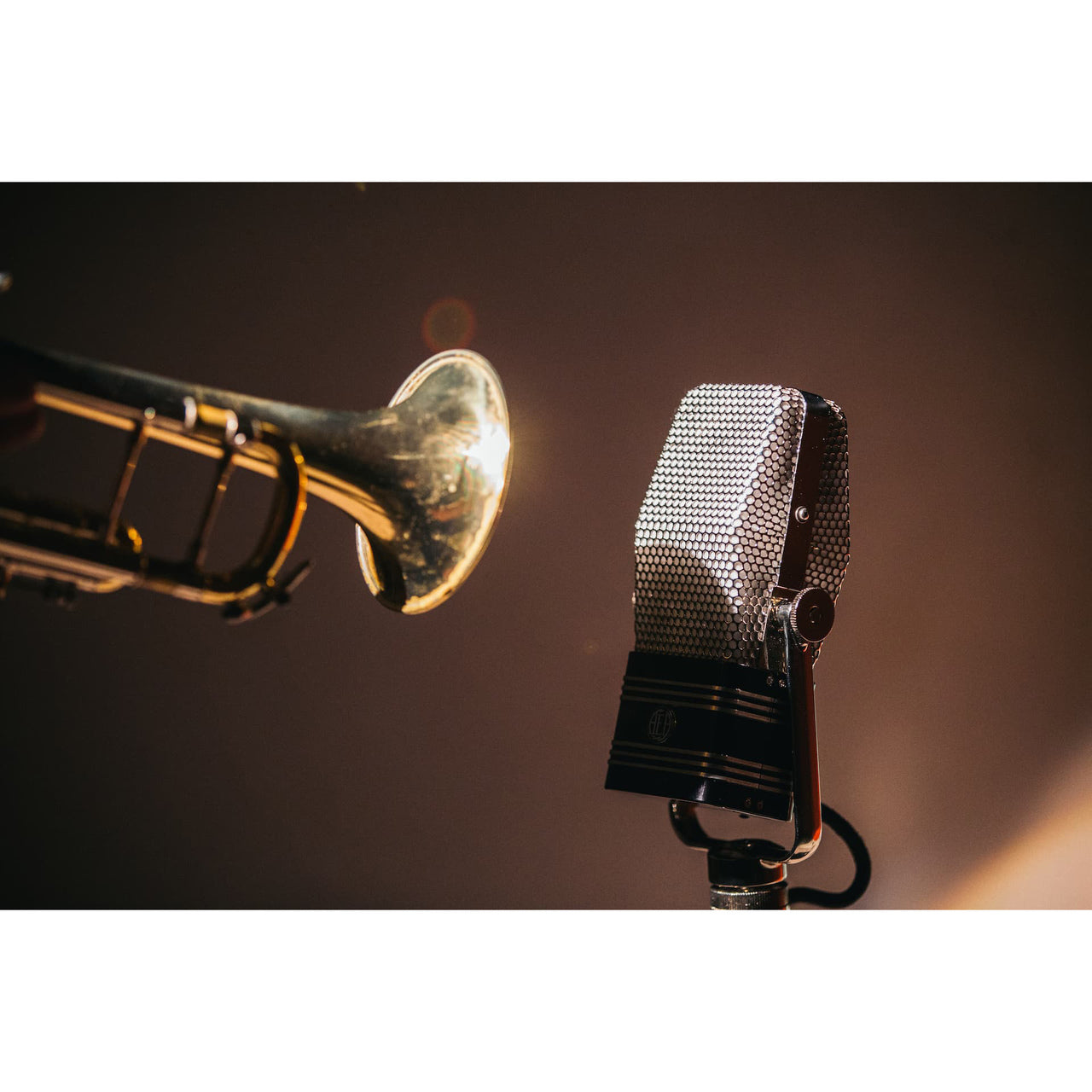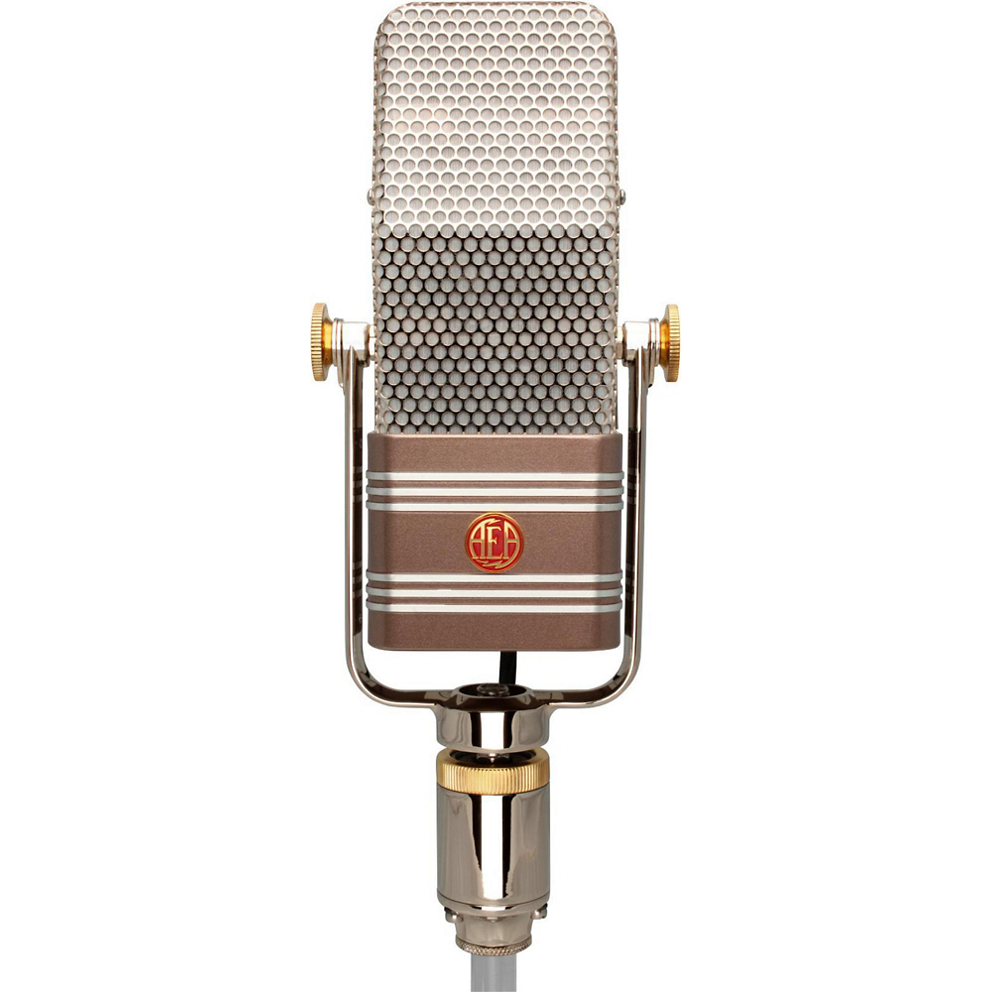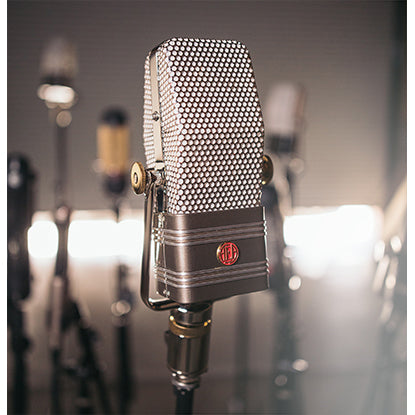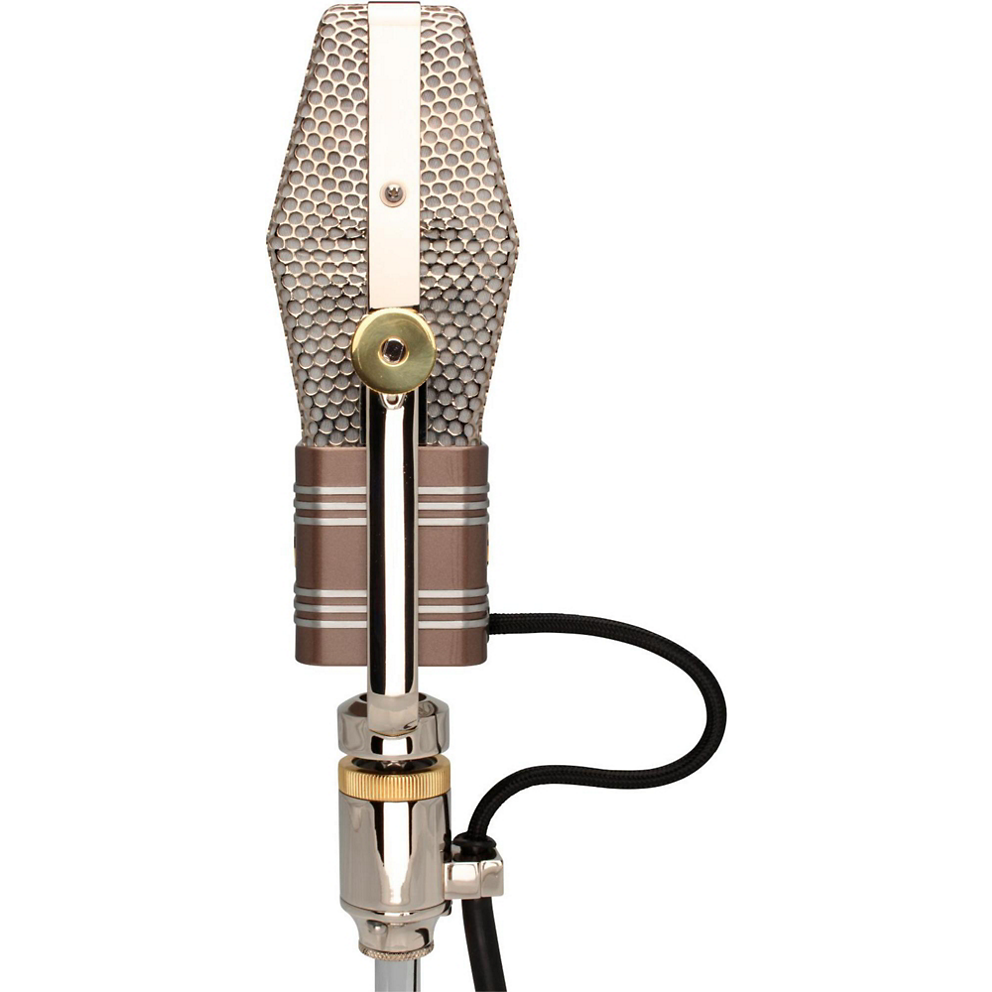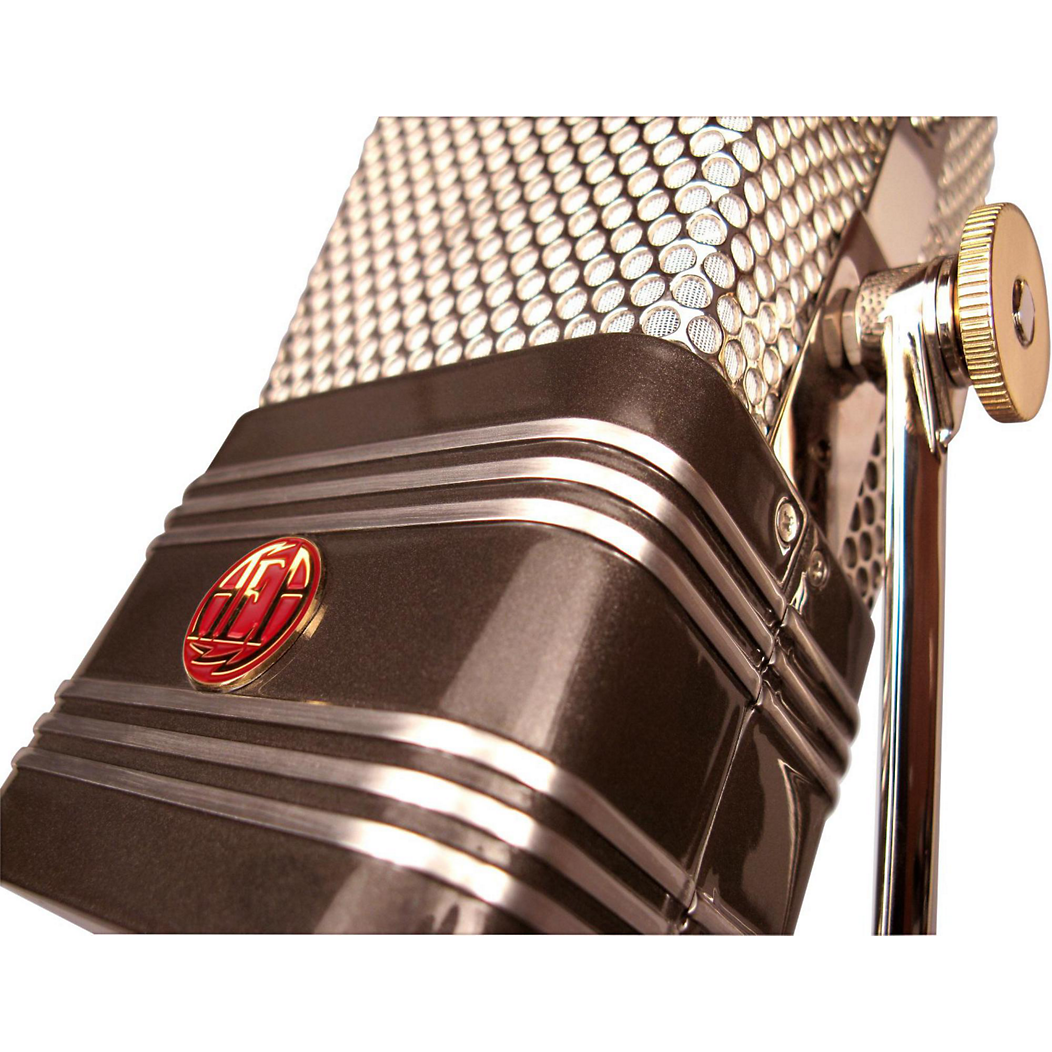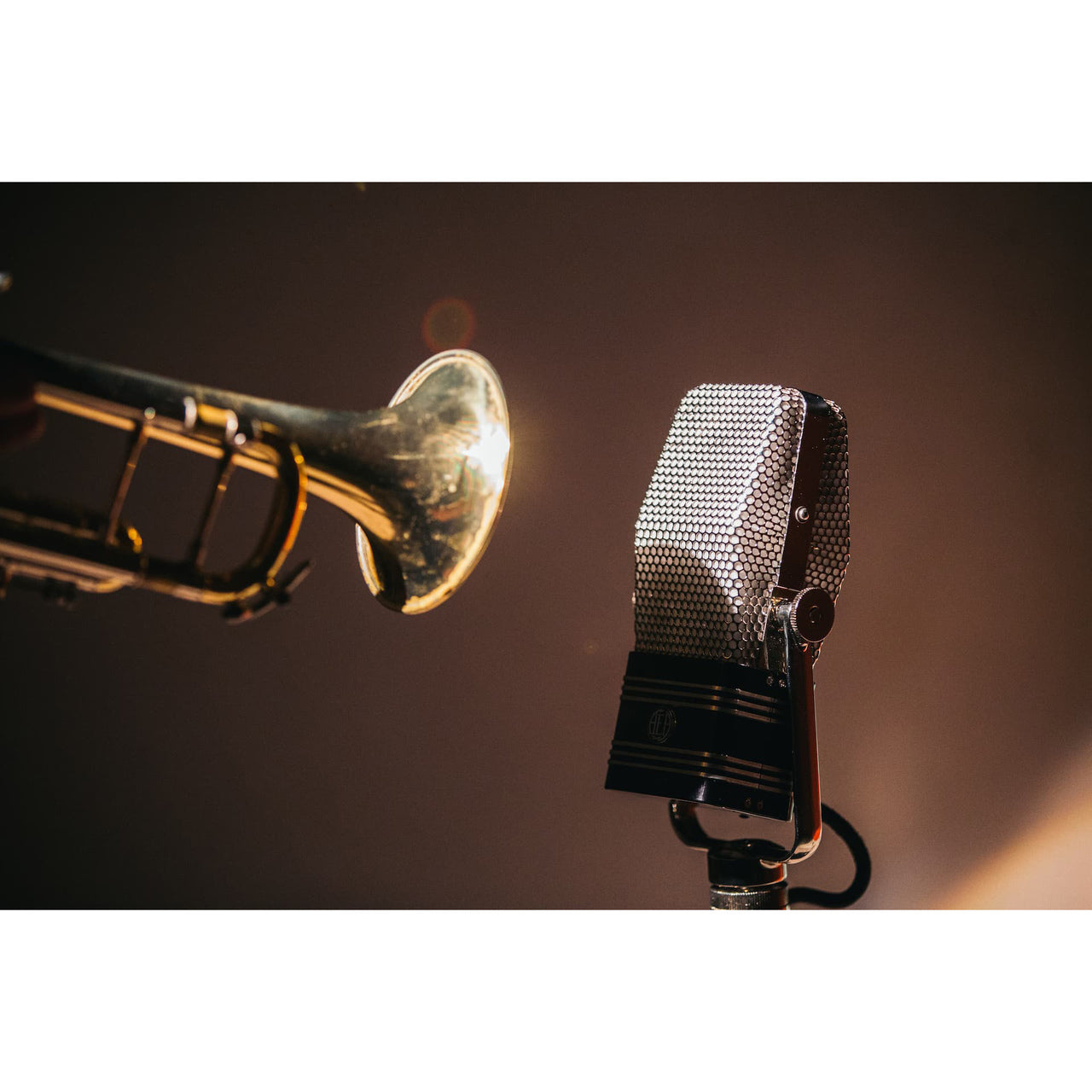Description
AEA A440 Ribbon Microphone (Phantom-Powered)
High Performance Phantom-Powered Ribbon
In the 44 Tradition, With X-Motor & Full Museum Quality Shell Standard
The active A440 is a preamp-flexible R44 with 18dB of extra output. It is custom-painted with the RCA classic umber-colored transformer case. The active A440 is an ultra-premium version of the R44C. It is complete with a custom Lehle transformer, RPQ JFET preamp electronics and the “X” motor hotrod and is the quietest ribbon microphone ever manufactured. It retains the same sonic character of the passive R44C, but with an additional 18dB of output and greater flexibility with different preamps. Many engineers favor their A440s over their vintage RCA 44s due to the advantages in noise performance.
Here is an explanation of the differences between the different AEA models: The AEA R44C is an exact replica of the vintage RCA 44BX ribbon microphone, considered the most musical sounding microphone ever built. Many of the 20th century’s most iconic recordings were recorded by the R44. The AEA R44 is an exacting reproduction of the RCA 44B/BX Velocity Microphone, circa 1936. Audio Engineering Associates had already been buying, selling, and repairing vintage RCA and other ribbon microphones for two decades, before deciding to reissue the RCA 44. The first question, however, was “Which model should we rerelease?” Many design changes had altered the microphone during the production years of 1936 through 1958. We consulted many engineers and users and decided that the earlier versions from the 30’s to mid-40’s were the all-around favorite, the ones with the ‘magic sound.’
The AEA R44C / CX is a faithful reproduction, down to one ten-thousandth of an inch. The parts are completely interchangeable with a real 44, the only difference being the magnets. Our modern AEA R44C / CX uses Neodymium magnets, which are more powerful than the Alnico originals. This produces an output level that is about 1 dB higher than the original microphone, while our R44CX High Output version is about 6 dB higher. The ribbon is made from the original RCA ribbon stock! Yes, some of the real stuff had been stored for all these years after RCA discontinued that arm of its business. We also were able to garner some help from one of the original RCA engineers. With their invaluable help, we were able to make this legendary microphone available again.
THE R44 VARIANTS - The passive R44 is available in two exteriors– the original museum-quality replica R44C and the aesthetically cost-effective R44CE. Both mics have an identical sound and are exactly the same on the inside. The difference between the two is only cosmetics and price. The R44CX is the High Output version of the museum quality original, which is about 5dB higher. It is also available in a cost-effective edition - the R44CXE. The active A440 is a preamp-flexible R44 with 18dB of extra output. It is custom-painted with the RCA classic umber-colored transformer case.
R44 SERIES MICROPHONE OVERVIEW
- Unparalleled warmth and legendary character
- Full and rich tonality with generous low end and proximity effect
- Faithful reproduction of the RCA R44BX with new old stock RCA ribbon material
- Economy exterior R44CE exhibits same, classic sound
- Active A440 upgrade has 12db level increase and is optimized for all preamps
- Made in the U.S.A.
The First Great Microphone for Music. Whether it was the smooth brass section of the soundtrack of a classic Hollywood film, the velvety lushness of a jazz vocal or the larger-than-life drum sound of a classic rock recording, chances are an RCA 44-series ribbon microphone was used in the studio when the sound was created. In use for more than 80 years in recording and broadcast studios throughout the world, the RCA 44 ribbon design is as rich in history as it is in sound and character. This instantly recognizable sound produces thunderous lows due to the strong proximity effect, full and rich midrange and a unique top end taking the edge off of harsh instruments. In 1976, AEA decided to begin servicing the thousands of existing RCA ribbon mics in the world. By 1998, AEA had acquired 100 percent of the interchangeable parts used within the original RCA 44. That same year we debuted our R44 reissue — called the AEA R44C — using RCA’s original methods and techniques.
THE LEGENDARY BIG RIBBON SOUND - The AEA R44 maintains an iconic legacy of great ribbon mics by delivering a rich sound full of character and color. Effective on a broad range of instruments and rooms, the R44 bolsters mids and lows while smoothing harsh high frequencies to produce a multi-dimensional sound unlike that of any microphone the world over. Used on everything from crooning vocalists to full orchestras, the R44 is the ideal choice to capture the tone of any voice or instrument while imparting its legendary ribbon character.
DIFFERENT OUTSIDES, THE SAME SOUND - Our R44 Series microphones all share the authentic sound, feel and look of the 1936-38 RCA 44BX. The R44 series microphones are all detailed, hand-crafted replicas, using parts that are made to be interchangeable with an original RCA 44. We manufacture three different versions of the R44 and an optional hotrod. At the core, every version of the R44 sounds the same when powered with a ribbon preamp. The major differences between the versions are the exterior look and the amount of output level.
High-Output Upgrades - The original R44 microphones were constantly updated during their twenty years of production, and after carefully looking at some of the technical modifications, we've created two upgrades to the original R44.
- The active A440 is an ultra-premium version of the R44C. It is complete with a custom Lehle transformer, RPQ JFET preamp electronics and the “X” motor hotrod and is the quietest ribbon microphone ever manufactured. It retains the same sonic character of the passive R44C, but with an additional 18dB of output and greater flexibility with different preamps. Many engineers favor their A440s over their vintage RCA 44s due to the advantages in noise performance.
- We developed a modified R44 transducer, called the X-Motor, that includes two additional magnets that provide an extra 6db of output. With a sound identical to the original 44, the X-Motor ‘hot rod’ mod is useful for scoring and classical sessions and other applications demanding a wide dynamic range with the classic 44 sound. Available as an upgrade in R44C and CE models, the X-Motor version of the R44 bears a red-badge on the outside instead of the standard black badge.
Technical Specifications
| Operating Principle | Pressure gradient transducer |
| Directional Pattern | Bidirectional |
| Frequency Range |
< 20 Hz to >20 kHz |
| Polarity | Pin 2 high for positive pressure at the front of the microphone. |
|
Polar Response |
Native bidirectional, figure-of-8 pattern |
|
Polar Response Horizontal |
Up to 90 dB rejection |
| Polar Response Vertical |
Level changes with angle of incidence, |
| Transducer Element Material |
Pure aluminum corrugated ribbon |
|
Transducer Thickness |
1.8 μm |
| Transducer Width |
0.185 in (4.7 mm) |
| Transducer Length |
2.35 in (59.7 mm) |
| Dimensions /Weight |
Height: 12.25 in (31.1 cm) Width: 4.62 in (11.7 cm) Depth: 3.25 in (8.3 cm) Weight: 7 lb. 9 oz. (3.43 kg) |
| Connector Type |
XLR-3M |
| Shipping Weight | Not Specified |
| Accessories Included |
Vertical Case, User Manual, |
|
|
|
| R44C / CE / CX Passive Microphones | |
| Maximum SPL |
165+ dB SPL (1% third harmonic > 1 kHz) |
| Sensitivity |
2.25 mV/Pa (-53 dBv) into unloaded circuit |
| Output Impedance |
270 Ω broadband |
|
Recommended Load Impedance |
1.2 kΩ or greater |
| Phantom Power |
Not required or recommended |
|
|
|
| A440 Phantom-Powered Microphone | |
| Maximum SPL |
136+ dB SPL (1% third harmonic > 1 kHz) |
| Sensitivity |
30 mV/Pa (-33.5 dBv) into unloaded circuit |
| Output Impedance |
92 Ω broadband |
|
Recommended Load Impedance |
1.0 kΩ or greater |
| Phantom Power |
P48 phantom power, 7 mA |
